SQL programming

Order Now
Why Choose The Programming Assignment Help?
On Time Delivery
Plagiarism Free Service
24/7 Support
Affordable Pricing
PhD Holder Experts
100% Confidentiality
- Statistical Functions in SQL
- Advanced Queries in SQL Explained By Our SQL Tutors
- SQL Queries - SQL Online Tutoring Blog
- SQL Metadata Queries - Concepts Explained by Our SQL Tutors
- SQL Functions Explained by Our SQL Programming Tutors
- SQL Constraints | Concepts Explained By SQL Programming Tutors
- Procedural Language in SQL
- SQL Assignment Help on Oracle Environment
- SQL Homework Solution on Data Manipulation
- SQL Injection Threats and Mitigation
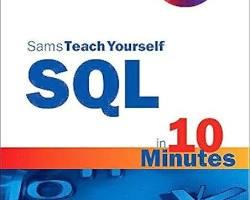
SQL in 10 Minutes, Sams Teach Yourself (Ben Forta)
SQL in 10 Minutes, Sams Teach Yourself" by Ben Forta is a concise guide for beginners to swiftly grasp SQL essentials. Covering fundamental concepts, querying databases, and practical exercises, it offers a structured approach to mastering SQL in short durations. Ideal for learners seeking quick proficiency in database management.
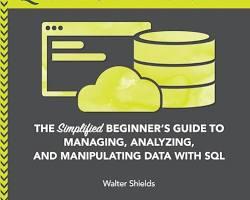
SQL QuickStart Guide: The Simplified Beginner's Guide to Managing, Analyzing, and Manipulating Data With SQL (Allen G. Taylor)
"SQL QuickStart Guide: The Simplified Beginner's Guide to Managing, Analyzing, and Manipulating Data With SQL" by Allen G. Taylor offers an approachable and easy-to-understand introduction to SQL. This book demystifies complex concepts, providing clear explanations and practical examples, making it ideal for beginners eager to learn data management and analysis efficiently.
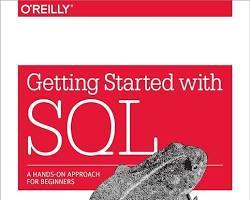
Getting Started with SQL (Thomas Nield)
"Getting Started with SQL" by Thomas Nield is a practical introduction to SQL, designed to make learning database querying accessible and straightforward. The book guides readers through the basics of SQL with clear explanations and hands-on exercises, making it perfect for beginners looking to build a solid foundation in SQL.

SQL Queries for Mere Mortals (John Viescas)
"SQL Queries for Mere Mortals" by John Viescas is an essential guide for those new to SQL, offering a clear and comprehensive approach to writing effective queries. The book simplifies complex concepts with practical examples and step-by-step instructions, making it accessible for beginners aiming to master SQL querying skills.
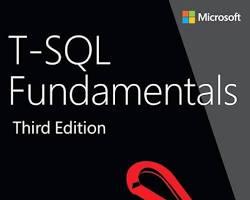
T-SQL Fundamentals (Itzik Ben-Gan)
"T-SQL Fundamentals" by Itzik Ben-Gan is a comprehensive resource for mastering Transact-SQL, the language used in Microsoft SQL Server. With clear explanations and practical examples, Ben-Gan guides readers through fundamental concepts and advanced techniques, making it indispensable for anyone seeking proficiency in SQL Server development and administration.
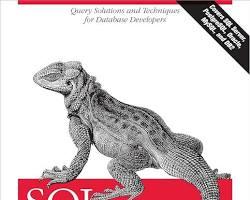
SQL Cookbook: Query Solutions and Techniques for Database Developers (Anthony Molinaro)
"SQL Cookbook: Query Solutions and Techniques for Database Developers" by Anthony Molinaro offers a treasure trove of practical solutions for database developers. Molinaro presents a wide array of SQL queries and techniques, accompanied by detailed explanations and real-world examples, making it an invaluable resource for developers seeking efficient and effective solutions to common SQL challenges.
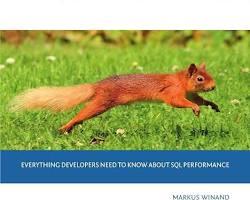
SQL Performance Explained (Markus Winand)
"SQL Performance Explained" by Markus Winand provides a deep dive into optimizing SQL performance. Winand elucidates key performance principles, indexing strategies, and query tuning techniques, empowering developers to write efficient SQL code. With clear explanations and practical insights, this book is indispensable for anyone aiming to boost database performance and scalability.
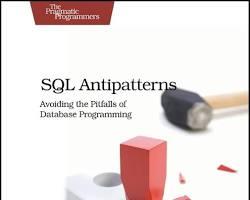
SQL Antipatterns: Avoiding the Pitfalls of Database Programming (Bill Vaughn)
"SQL Antipatterns: Avoiding the Pitfalls of Database Programming" by Bill Vaughn is an enlightening guide to navigating common pitfalls in database programming. Vaughn identifies prevalent SQL design mistakes and provides solutions to avoid them. With practical examples and expert advice, this book equips developers with the knowledge to build robust and efficient database solutions.
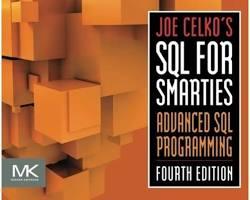
SQL for Smarties: Advanced SQL Programming (Joe Celko)
"SQL for Smarties: Advanced SQL Programming" by Joe Celko is a helpful book for experienced SQL users. It teaches advanced techniques like recursion and set-based operations with easy-to-understand examples. If you want to improve your SQL skills and tackle complex tasks, this book is a great resource.
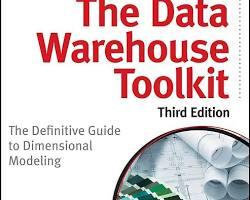
The Data Warehouse Toolkit: The Definitive Guide to Dimensional Modeling (Ralph Kimball, Ralph Kimball)
"The Data Warehouse Toolkit" by Ralph Kimball is like a friendly mentor for setting up data warehouses. It shows you how to organize data in a way that makes sense for analysis. Whether you're new to this or already experienced, the book offers valuable tips for building effective data warehouses that work for your business.
Aggregate Functions
Function
Description
AVG()
Returns the average value of a numeric column.
COUNT()
Returns the number of rows that matches a specified criterion.
MAX()
Returns the maximum value in a set.
MIN()
Returns the minimum value in a set.
SUM()
Returns the total sum of a numeric column.
String Functions
Function
Description
CONCAT()
Adds two or more strings together.
LENGTH()
Returns the length of a string.
LOWER()
Converts a string to lower-case.
UPPER()
Converts a string to upper-case.
SUBSTRING()
Extracts characters from a string.
REPLACE()
Replaces all occurrences of a substring within a string.
Date Functions
Function
Description
CURDATE()
Returns the current date.
CURTIME()
Returns the current time.
NOW()
Returns the current date and time.
DATE()
Extracts the date part of a date or datetime expression.
DATEDIFF()
Returns the difference in days between two dates.
DATE_ADD()
Adds a time/date interval to a date and then returns the date.
DATE_SUB()
Subtracts a time/date interval from a date and then returns the date.
Numeric Functions
Function
Description
ABS()
Returns the absolute value of a number.
CEILING()
Returns the smallest integer value that is greater than or equal to a number.
FLOOR()
Returns the largest integer value that is less than or equal to a number.
ROUND()
Rounds a number to a specified number of decimal places.
SQRT()
Returns the square root of a number.
Other Functions
Function
Description
CAST()
Converts a value from one data type to another.
COALESCE()
Returns the first non-null value in a list.
NULLIF()
Returns NULL if the two expressions are equal.
ISNULL()
Checks whether an expression is NULL.
IFNULL()
Returns a specified value if the expression is NULL.
Control Flow Functions
Function
Description
CASE
Returns a value based on a specified condition.
IF()
Returns a value if a condition is true, otherwise returns another value.
Window Functions
Function
Description
ROW_NUMBER()
Assigns a unique number to each row within the partition of a result set.
RANK()
Assigns a rank to each row within the partition of a result set.
DENSE_RANK()
Assigns a rank to each row within the partition of a result set without gaps in ranking.
NTILE()
Divides the result set into a specified number of roughly equal parts.
|
Function |
Description |
|---|---|
|
AVG() |
Returns the average value of a numeric column. |
|
COUNT() |
Returns the number of rows that matches a specified criterion. |
|
MAX() |
Returns the maximum value in a set. |
|
MIN() |
Returns the minimum value in a set. |
|
SUM() |
Returns the total sum of a numeric column. |
|
Function |
Description |
|---|---|
|
CONCAT() |
Adds two or more strings together. |
|
LENGTH() |
Returns the length of a string. |
|
LOWER() |
Converts a string to lower-case. |
|
UPPER() |
Converts a string to upper-case. |
|
SUBSTRING() |
Extracts characters from a string. |
|
REPLACE() |
Replaces all occurrences of a substring within a string. |
Date Functions
Function
Description
CURDATE()
Returns the current date.
CURTIME()
Returns the current time.
NOW()
Returns the current date and time.
DATE()
Extracts the date part of a date or datetime expression.
DATEDIFF()
Returns the difference in days between two dates.
DATE_ADD()
Adds a time/date interval to a date and then returns the date.
DATE_SUB()
Subtracts a time/date interval from a date and then returns the date.
Numeric Functions
Function
Description
ABS()
Returns the absolute value of a number.
CEILING()
Returns the smallest integer value that is greater than or equal to a number.
FLOOR()
Returns the largest integer value that is less than or equal to a number.
ROUND()
Rounds a number to a specified number of decimal places.
SQRT()
Returns the square root of a number.
Other Functions
Function
Description
CAST()
Converts a value from one data type to another.
COALESCE()
Returns the first non-null value in a list.
NULLIF()
Returns NULL if the two expressions are equal.
ISNULL()
Checks whether an expression is NULL.
IFNULL()
Returns a specified value if the expression is NULL.
Control Flow Functions
Function
Description
CASE
Returns a value based on a specified condition.
IF()
Returns a value if a condition is true, otherwise returns another value.
Window Functions
Function
Description
ROW_NUMBER()
Assigns a unique number to each row within the partition of a result set.
RANK()
Assigns a rank to each row within the partition of a result set.
DENSE_RANK()
Assigns a rank to each row within the partition of a result set without gaps in ranking.
NTILE()
Divides the result set into a specified number of roughly equal parts.
|
Function |
Description |
|---|---|
|
CURDATE() |
Returns the current date. |
|
CURTIME() |
Returns the current time. |
|
NOW() |
Returns the current date and time. |
|
DATE() |
Extracts the date part of a date or datetime expression. |
|
DATEDIFF() |
Returns the difference in days between two dates. |
|
DATE_ADD() |
Adds a time/date interval to a date and then returns the date. |
|
DATE_SUB() |
Subtracts a time/date interval from a date and then returns the date. |
|
Function |
Description |
|---|---|
|
ABS() |
Returns the absolute value of a number. |
|
CEILING() |
Returns the smallest integer value that is greater than or equal to a number. |
|
FLOOR() |
Returns the largest integer value that is less than or equal to a number. |
|
ROUND() |
Rounds a number to a specified number of decimal places. |
|
SQRT() |
Returns the square root of a number. |
Other Functions
Function
Description
CAST()
Converts a value from one data type to another.
COALESCE()
Returns the first non-null value in a list.
NULLIF()
Returns NULL if the two expressions are equal.
ISNULL()
Checks whether an expression is NULL.
IFNULL()
Returns a specified value if the expression is NULL.
Control Flow Functions
Function
Description
CASE
Returns a value based on a specified condition.
IF()
Returns a value if a condition is true, otherwise returns another value.
Window Functions
Function
Description
ROW_NUMBER()
Assigns a unique number to each row within the partition of a result set.
RANK()
Assigns a rank to each row within the partition of a result set.
DENSE_RANK()
Assigns a rank to each row within the partition of a result set without gaps in ranking.
NTILE()
Divides the result set into a specified number of roughly equal parts.
|
Function |
Description |
|---|---|
|
CAST() |
Converts a value from one data type to another. |
|
COALESCE() |
Returns the first non-null value in a list. |
|
NULLIF() |
Returns NULL if the two expressions are equal. |
|
ISNULL() |
Checks whether an expression is NULL. |
|
IFNULL() |
Returns a specified value if the expression is NULL. |
|
Function |
Description |
|---|---|
|
CASE |
Returns a value based on a specified condition. |
|
IF() |
Returns a value if a condition is true, otherwise returns another value. |
Window Functions
Function
Description
ROW_NUMBER()
Assigns a unique number to each row within the partition of a result set.
RANK()
Assigns a rank to each row within the partition of a result set.
DENSE_RANK()
Assigns a rank to each row within the partition of a result set without gaps in ranking.
NTILE()
Divides the result set into a specified number of roughly equal parts.
|
Function |
Description |
|---|---|
|
ROW_NUMBER() |
Assigns a unique number to each row within the partition of a result set. |
|
RANK() |
Assigns a rank to each row within the partition of a result set. |
|
DENSE_RANK() |
Assigns a rank to each row within the partition of a result set without gaps in ranking. |
|
NTILE() |
Divides the result set into a specified number of roughly equal parts. |

SQLAlchemy
SQLAlchemy empowers Python developers with robust SQL capabilities and an Object-Relational Mapper (ORM). Offering enterprise-level persistence patterns, it ensures efficient database access and simplifies domain language integration. Key features include a powerful ORM, flexible query system, eager loading mechanisms, and a comprehensive Core SQL construction layer. SQLAlchemy's philosophy prioritizes developer control, transparency, and transaction management, ensuring optimal performance and security.

Metabase
To kickstart your journey with Metabase, simply sign up for a free trial of Metabase Cloud. Enjoy support, backups, upgrades, and more, with your contribution enhancing Metabase's features. Explore the advantages of cloud versus self-hosting, and effortlessly transition between the two as needed.
Features:
- Rapid setup in just five minutes.
- Enable team members to query data without SQL knowledge.
- Utilize the SQL editor for advanced queries.
- Craft visually appealing dashboards with filters, auto-refresh, and custom click behavior.
- Create models to refine, annotate, and consolidate raw data tables.
- Define canonical segments and metrics for team use.
- Schedule data delivery to Slack or email with dashboard subscriptions.
- Configure alerts to stay informed of data changes.
- Seamlessly embed charts and dashboards into your app or Metabase instance.

Superset
Superset offers versatile querying capabilities across various SQL-speaking datastores and engines like Presto, Trino, Athena, and more. Supported databases include Redshift, Google BigQuery, Snowflake, and others, with comprehensive configuration instructions available. Get involved in the community through StackOverflow, Slack, or mailing lists. Interested in contributing? Check out the Contributor Guide for resources and setup instructions. Explore Superset's rich resources for deployment, visualization, and API documentation to harness its full potential.

Redash
Redash empowers users of all technical levels to explore, query, visualize, and share data from various sources, facilitating data-driven decision-making across organizations globally.
Redash Features:
- Browser-based: Access everything via a shareable URL.
- Ease-of-use: Immediate productivity without complex software.
- Query editor: Compose SQL and NoSQL queries with schema browser and auto-complete.
- Visualization and dashboards: Create and combine visualizations into dashboards with drag and drop.
- Sharing: Share visualizations and queries for easy collaboration and peer review.
- Schedule refreshes: Automatically update charts and dashboards at defined intervals.
- Alerts: Set conditions for instant alerts on data changes.
- REST API: Perform all UI actions via REST API.
Broad support for data sources: Extensible API supporting many common databases and platforms.

Presto
Presto is a powerful distributed SQL query engine optimized for running interactive queries on large datasets. It supports multiple data sources like HDFS, S3, and various databases, providing high performance and scalability. With full ANSI SQL support and an in-memory execution model, Presto delivers fast query results, making it ideal for big data analytics.

Materialize
Materialize is a cloud-native data warehouse optimized for real-time workloads, offering instant, consistent analytics with minimal latency. It supports data from Kafka, PostgreSQL, and more, using familiar SQL tools. Key features include high availability, horizontal scalability, and comprehensive SQL support. Get started by signing up, and join the community on Slack or via email for support.

PostGIS
This file supports modern code repository tools. The actual readme is available in the repository.
Official Code Repository, Issue Tracker, and Wiki:
Search for PostGIS on OSGeo's Trac system.
Translations:
We use Weblate for translations. To help, log into OSGeo Weblate. If you need an OSGeo account, you can create one. An OSGeo account lets you contribute to translating the PostGIS workshop and documentation, and submit bug tickets.

TimescaleDB
TimescaleDB extends PostgreSQL for scalable time-series data. It automatically partitions data across time and space and offers full SQL support. A 30-day free trial of Timescale Cloud, a managed service, is available. Choose between TimescaleDB Community (self-hosted) and Timescale Cloud. Resources include documentation, Slack channel, and community forum. All code files specify licensing.

Sqitch
Sqitch is a database change management tool supporting various databases like PostgreSQL, SQLite, MySQL, and more. Unlike typical migration approaches, Sqitch is framework-agnostic, allowing native scripting in SQL for each database engine. It resolves dependencies between changes, ensuring proper execution order, and maintains deployment integrity using a Merkle tree pattern. It supports iterative development, allowing modifications until project tagging and release.
Expert Answers
INNER JOIN is suitable when you only need matching records between tables, while OUTER JOIN is preferred when you want to include all records from one table, even if there are no matches in the other table.
To filter data effectively, utilize the WHERE clause with appropriate conditions to precisely narrow down the rows returned by your query while ensuring no relevant information is overlooked.
Yes, GROUP BY allows you to aggregate rows with similar values into summary rows while retaining crucial details, enabling tasks like generating sales reports per customer or analyzing orders per month.
Use the ORDER BY clause to arrange query results based on specific columns, ensuring clarity and ease of interpretation for analysis or reporting purposes.
Subqueries, nested within other queries, provide additional data or conditions for the main query. They are particularly useful for complex data retrieval or filtering tasks where multiple levels of data analysis are required.
Data insertion involves using the INSERT INTO statement to specify the table name and values to be added to each column. Ensure data integrity by providing valid values that adhere to any constraints or data types defined for the table columns.
Utilize the DISTINCT keyword to eliminate duplicate records from query results, guaranteeing that only distinct values are retrieved for specified columns in the SELECT statement.
When utilizing the UPDATE statement, be mindful to specify the table name, columns to be updated, and the corresponding new values. Exercise caution to prevent inadvertent alterations or data loss during the update process.
A primary key serves to uniquely identify each record in a table, upholding data integrity and streamlining data retrieval processes. It is selected based on a column or a combination of columns that guarantee the uniqueness of each row in the table.
Exercise caution when employing the DELETE statement, ensuring to specify the table name and optionally filtering conditions to identify the rows for deletion. Always verify the conditions to prevent unintended data loss or corruption.